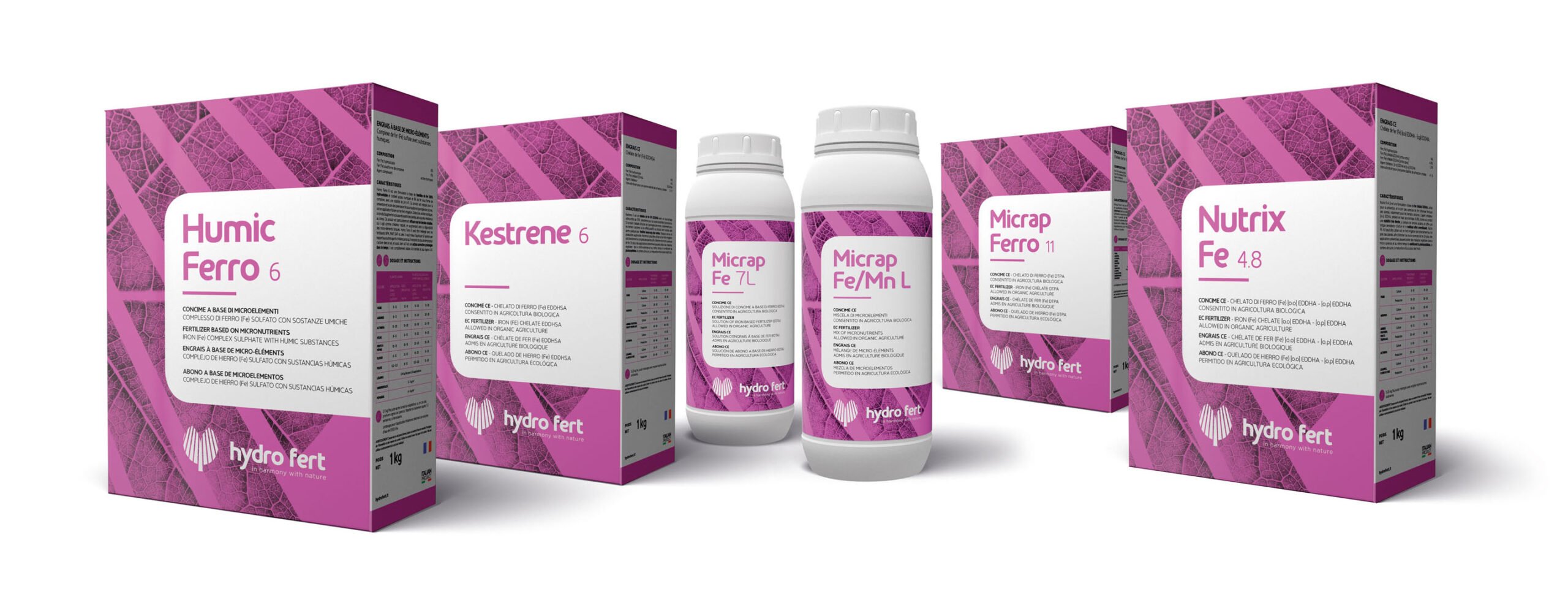A nutrient can be defined “essential” when its deficiency in a plant/sand or plant/solution system causes an abnormal development or the crops death. When we refer to macronutrients (or macroelements) we consider all of them as fundamentals for a proper plant’s growth. When it comes to micronutrients (or microelements) we can mention amongst the most important ones: iron (Fe), zinc (Zn), manganese (Mn), copper (Cu), boron (B) and molybdenum (Mo).
The efficiency in nutrients absorption process by plants depends on several factors, such as:
concentration of ions in the liquid phase, based on chemical and physical features of soil;
antagonism and synergism: the correlations between the elements, which can mutually take advantage or hinder each other;
oxygen tensions in soil: a water stagnation does not allow a good nutrients absorption;
soil pH: each element can be absorbed more efficiently with specific pH ranges;
extensions and functionalities of the root system: the more expanded it is the more it’s able to explore the rhizosphere.
In this article we focus on the importance of the “iron” micronutrient for plants.
Iron is one of the essential elements for the correct crops growth, though it results to be not so mobile and – even if it’s present into the soil – it’s not easily absorbed by plants. The factors that can cause an iron deficiency are:
presence of limestone;
excessive soil moisture;
extreme temperatures (too low or too high);
high presence of copper, zinc and manganese;
grafting combinations (affinity between the two grafted parts);
excessive use of phosphorus-based fertilizations.
Iron is used by plants for the formation of chlorophyll, a fundamental molecule for the photosynthesis. Crops affected by a lack of such element show a very pronounced chlorosis of the young leaves starting from the veins. Later, the yellowing also spreads to the older leaves causing necrosis.
As above mentioned, iron is not easily absorbed, so it must be supplied in chelated forms. The chelating agent is an organic compound that links to this element, making the resulting substance more stable, more absorbable and with a better solubility at pH variations.
Chelating agents can be divided into two categories:
1) phenolics: EDDHA and EDDHSA, applied to the roots since they’re able to keep the iron in solution in calcareous soils;
2) non-phenolic: EDTA and DTPA, used in foliar applications and on crops moderately sensitive to deficiencies.
Further differences in the above agents are concerned with the type of their chelating, in particular considering the number of bonds they put up with iron: ortho-ortho EDDHA forms 6 bonds, ortho-para EDDHA forms 5 bonds and EDTA 4 bonds.

Hydro Fert offers different formulations containing iron to solve such micro-deficiency, namely:
Humic Ferro 6: iron 100%, complexed with humic acids. It improves plants growth, health and resistance against stress. It results to be particularly efficient in alkaline soils, where it constitutes a natural chelating agent increasing the availability of blocked micronutrients. This product should be applied in advance compared to the common chelating agents, because it takes more time to be active in the soil, though it has a more persistent and long-lasting action.
Kestrene 6: an iron chelate 6% EDDHSA with a ortho-ortho percentage of 3.5%, characterized by total solubility and persistency. It is suitable for every type of soil, especially the calcareous ones, where the results are visible in few days (leaves become remarkably greener, along with a better flowering and bigger yields). Preventive applications can avoid nutritional plants diseases and can also improve chlorophyll photosynthesis, sugar content, fruits ripening and colouring.
Micrap Fe 7L: based on iron EDTA chelated, can be used to rapidly recover a luxuriant green colouring and a full photosynthetic activity. The product has been particularly conceived to integrate or replace the root applications when roots absorption is poor due to adverse pedoclimatic conditions.
Micrap Fe/Mn L: based on iron and manganese EDTA chelated. The presence of chelated manganese strengthens the curative effect of iron and improves the photosynthetic efficiency in plants. The product has been particularly conceived to integrate or replace the root applications when roots absorption is poor due to adverse pedoclimatic conditions.
Micrap Ferro 11: based on iron DTPA chelated, it is apt for rapidly recovering a luxuriant green colouring and a full photosynthetic activity, thanks to its high content of iron chelate. Its best effects are given with a regular, repeated application (every 10-12 days) and homogenously wet plants.
Nutrix Fe 4.8: based on iron EDDHA chelated. The chelating agent [o-o] EDDHA, present in high percentage (4.8%), gives a high stability to the product, also in case of strong alkaline soils, and guarantees a persistent action, making plants greener and brighter. Preventive applications can avoid nutritional plant diseases and can also improve chlorophyll photosynthesis, sugar content, fruits ripening and colouring.
According to the above listed formulations, it is possible to choose the Hydro Fert product that best suits the crops needs (soil pH, foliar application, fertigation or soil application, powder or liquid formulation and iron sensitivity of crops).



